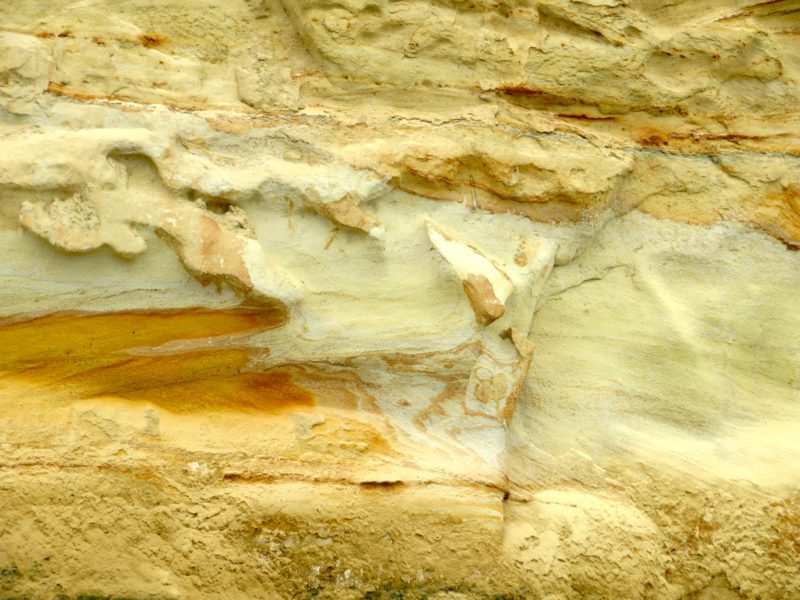
About a hundred years ago a lover used to call me the feuerrote Friderike, the fiery red Friderike. It was never resolved if he alluded to my politics or my emotional temperament. (He ended up in Bruxelles working as an administrative lawyer for the EU and raising five kids, too busy to contemplate past flights of fancy.)

Just as color can describe a person in some ways, color can also define a landscape. In the case of the area in and around San Diego, I feel it’s best labeled a golden ochre. The drought gilds the flora, the mineral composition colors the sandstone and the beaches, and some of the architecture follows suit.

A spectacular example are the sandstone cliffs at Torrey Pine State Park (a 2000 acre natural wonder,) north of La Jolla. The rocks are from the middle Eocene, 48.000.000 years old and continuously crumbling. https://torreypine.org

(Go there soon, if you are interested; once all the ice melts in Antarctica and Greenland these cliffs will be swallowed by the see rising some 300 ft…… ) http://www.nationalgeographic.com/magazine/2017/07/antarctica-sea-level-rise-climate-change/
Erosion of these cliffs is also a problem; it is caused by running water after storms, and rainwater which is slightly acidic by dissolving carbon dioxide from the air, then dissolving cementing minerals from the rocks.

I photographed the cliffs during overcast evening hours – I can only imagine how they look when lit by a low sun.


Further inland the gold is picked up by the desiccated trees, a kind of wistful beauty and a reminder to conserve water which seems not too high a priority on San Diego’s agenda if you look at the golf course lawns and city parks.





But then who am I to criticize, having watered my own garden continuously throughout this dry summer. Just trying to preserve the vibrant color of my roses while my own fiery red is slowly fading.
And this concludes our excursion to San Diego.





